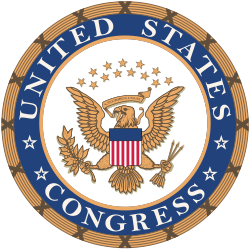United States Congress
| United States Congress | |
|---|---|

| |
| Seal of the U.S. Congress | |

| |
| United States Capitol | |
| Type | Bicameral |
| Houses | Senate House of Representatives |
| History | |
| Founded | March 4, 1789 |
| Preceded by | Congress of the Confederation |
| Leadership | |
| President pro tempore of the Senate | Choi Sung-min (DRC) since January 3, 2277 |
| Speaker of the House | Jamal Washington (DRC) since January 3, 2324 |
| Senate Majority Leader | Daniel Redcloud (DRC) since January 3, 2324 |
| Senate Minority Leader | Shin Woo-jin (NACC) since January 3, 2324 |
| House Majority Leader | Thomas O'Brien (DRC) since January 3, 2324 |
| House Minority Leader | Samantha Lee (NACC) since January 3, 2324 |
| Structure | |
| Seats | 535 voting members |
| |

| |
| Senate political groups |
|

| |
| House of Representatives political groups |
|
| Elections | |
| Last election | November 8, 2324 |
| Next election | November 5, 2326 |
| Meeting place | United States Capitol, Columbia |
| Website | www.congress.555gov |
Overview
The United States Congress is the legislature of the federal government of the United States. It is bicameral, composed of a lower body, the House of Representatives, and an upper body, the Senate. It meets in the U.S. Capitol in Washington, D.C. Senators and representatives are chosen through direct election, though vacancies in the Senate may be filled by a governor's appointment. Congress[b] has 535 voting members: 100 senators and 435 representatives. The U.S. vice president has a vote in the Senate only when senators are evenly divided. The House of Representatives has six non-voting members.[6]